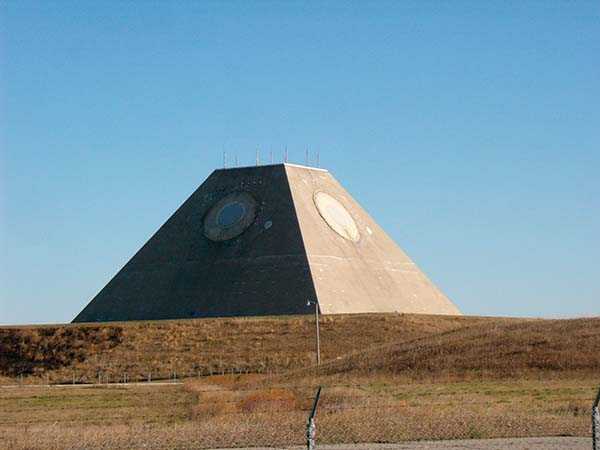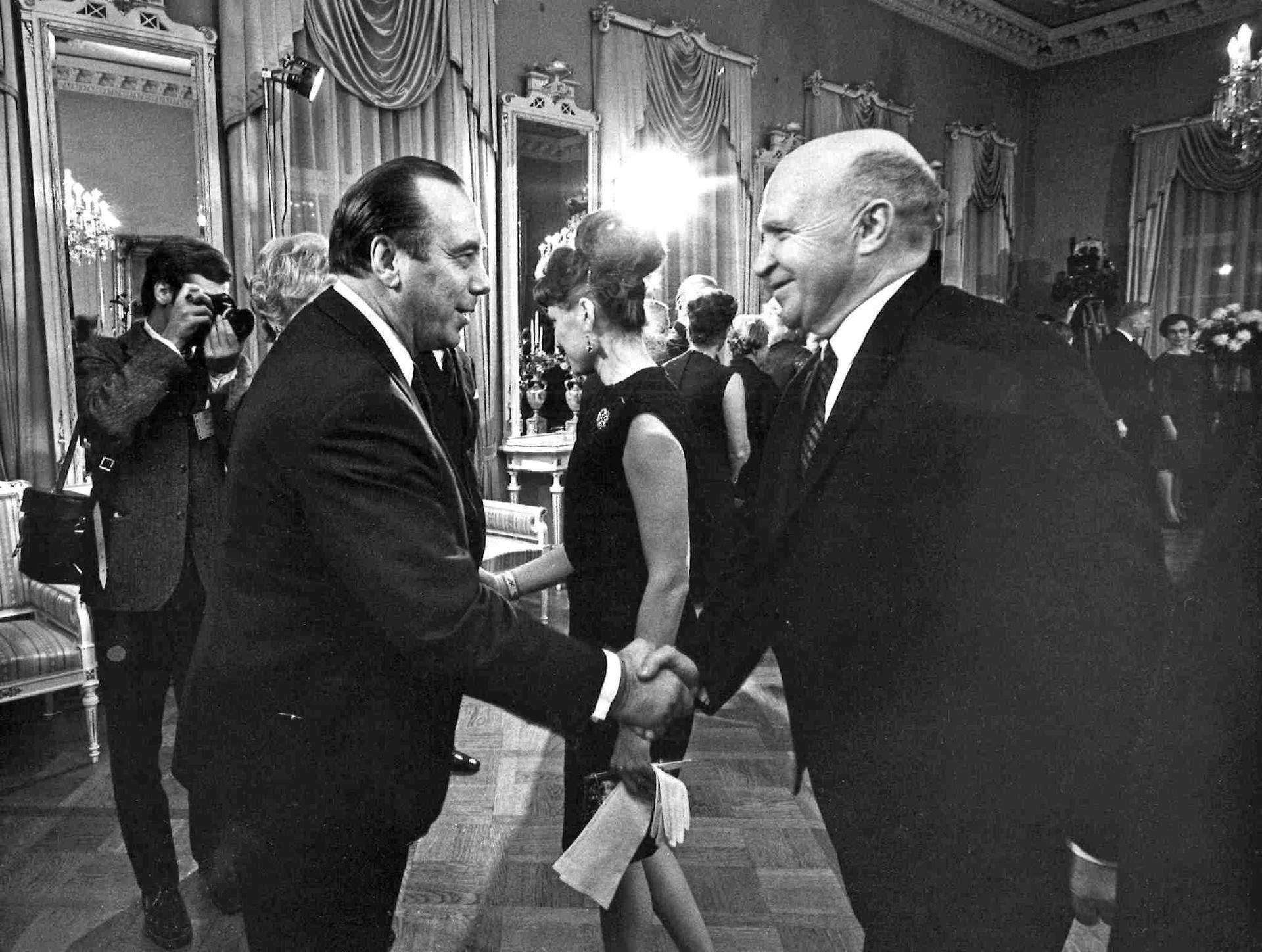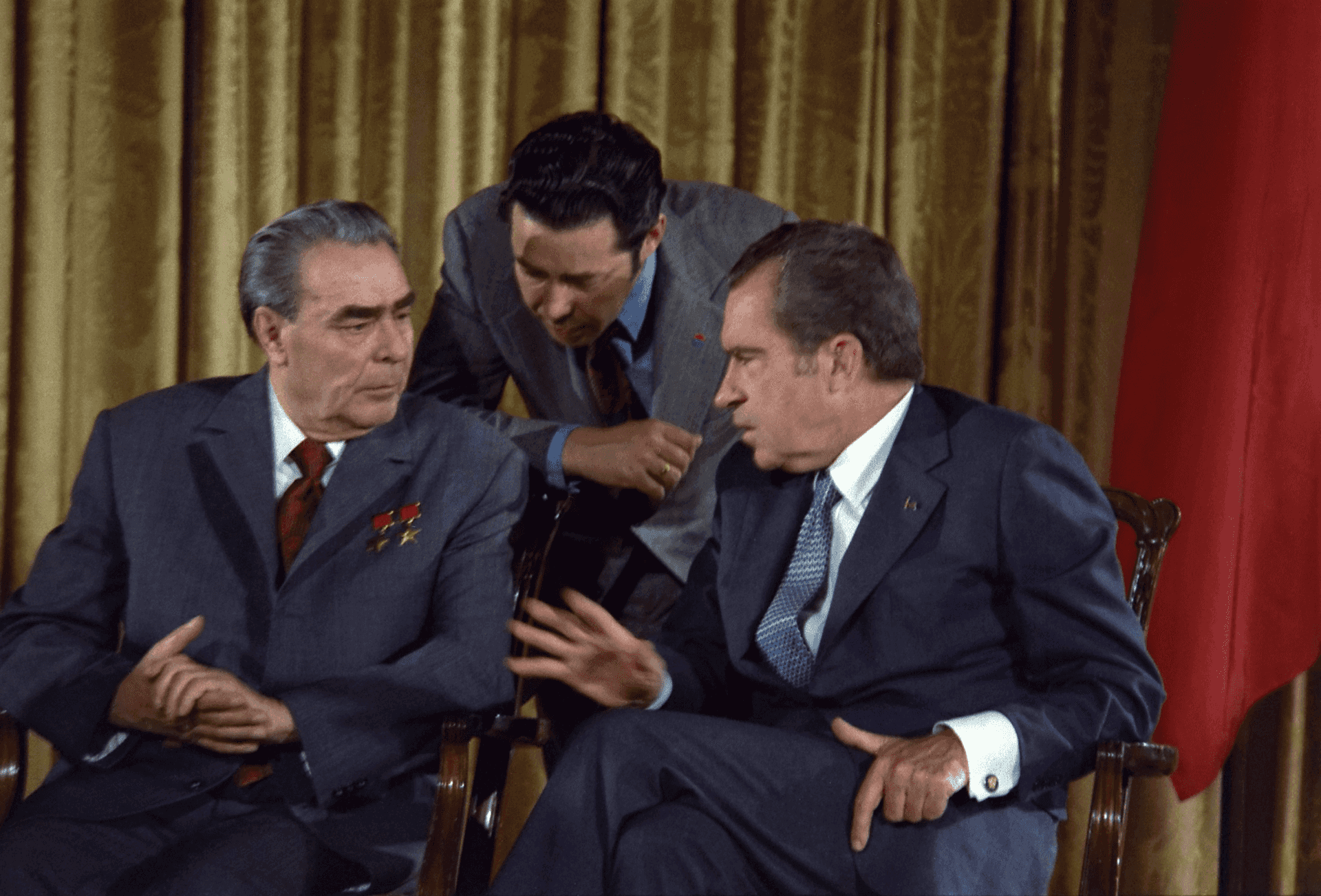After the Cuba-Shock: Addressing Nuclear Weapons
This video discusses:
- the unprecedented nature of the Cuban crisis in the history of the Cold War
- the establishment of bilateral strategic arms control structures between the United States and the USSR
- the first political reflections on the reduction of nuclear risks (hotlines, etc.)
- the first bilateral reflections on the challenge of non-proliferation of weapons of mass destruction globally
The SALT Process
The launch of the SALT (Strategic Arms Limitation Talks) process between the United States and the USSR at the end of the 1960s indicates a shift in American and Soviet strategic thinking, with the questioning of the notion of strategic superiority.
In this video, you will learn about:
- the process of bilateral talks beginning in November 1969
- the spirit and main provisions of the ABM Treaty
- the launch of the SALT II process
The SALT Process and the ABM Treaty
Main Permissions under the ABM Treaty
- Each side can have one limited ABM system to protect its capital and another to protect an ICBM launch area (100 ground-based missile interceptors).
- no more than 15 missile interceptor launchers at designated missile defense test ranges
- R&D, fixed land-based testing of any type of missile defense
- verification: national technical means to verify compliance
Main Prohibitions under the ABM Treaty
- missile defenses that can protect the territory against strategic ballistic missiles
- development, testing, deployment of sea, air, space, or mobile land-based ABM systems
- development, testing, deployment of ABM launchers able to launch more than 1 interceptor missile at a time
- deployment of radars for early warning of strategic ballistic missile attack
- At each site there may be no more than 100 interceptor missiles and 100 launchers.

A Safeguard Missile Site Radar, built to defend US missile bases. Craftsman2001 (public domain)
SALT and the ABM Treaty: A Timeline
The Cold War era faced different agreements between the US and the USSR – perhaps most remarkably the ABM Treaty, which lasted for thirty years! Discover the history from the first ABM negotiations in 1969 until its termination in 2002.
- November 1969
Starting Negotiations
After the US had proposed to the USSR to launch negotiations on the prohibition of ballistic missile defences in 1966, the Strategic Arms Limitation Talks (SALT) between the US and the USSR started in 1969 (Helsinki, Finland). Part of this first SALT process were formal negotiations of an ABM Treaty.
![In a decorated room, festively clothed men and women meet, two men in dark suits shake hands in the foreground.]() Martti Peltonen / Helsingin Sanomat / Wikimedia Commons, Public domain.
Martti Peltonen / Helsingin Sanomat / Wikimedia Commons, Public domain.The Finnish foreign minister Väinö Leskinen and the Soviet diplomat Vladimir Semyonovich Semyonov shake hands at the SALT I negotiations in Helsinki. The negotiations lasted from 1969 to 1972.
- May 1971
Agreement on ABM Treaty
Image not found (https://www.youtube.com/watch?v=xy-77tsg8V8)MCamericanpresident / Miller Center University of VirginiaUS President Nixon announces that an agreement between the US and the USSR has been reached.
- 1972—2002
Signing of the ABM Treaty
A year after agreements were reached, the ABM Treaty is signed by US President Richard Nixon and Soviet General Secretary Leonid Brezhnev (Moscow, USSR). It enters into force in October 1972.
Image not found (https://upload.wikimedia.org/wikipedia/commons/6/62/Richard_Nixon_and_Leonid_Brezhnev_sign_ABM_treaty_and_SALT_agreement_in_Moscow.jpg)Richard Nixon Presidential Library Photo Gallery / Wikimedia Commons, Public domain.President Nixon and General Secretary Brezhnev signed the ABM Treaty and the Interim Agreement on strategic offensive arms.
- May 1972—1977
SALT I
The Strategic Arms Limitation Talks Agreement (SALT I) is signed for a period of five years.
![Nixon and Brezhnev sit together, seemingly on a boat or a terrace by the water. They gesture; Brezhnev raising his index finger and Nixon pointing his thumb up.]() Oliver F. Atkins / White House Photo Office
Oliver F. Atkins / White House Photo OfficeUS President Richard Nixon and Soviet General Secretary Leonid Brezhnev – still in a good mood in 1973.
- June 1973
The Washington Summit
US President Richard Nixon and Soviet General Secretary Leonid Brezhnev agree to remove the danger of a nuclear war through avoiding direct and military conflict.
- July 1974
The US and the USSR sign a protocol halving the number of permitted defences (from 200 to 100).
- October 1975
Serving the ABM Treaty
The US decide to shut down its permitted ABM defence pursuant to the Treaty.
- 1977
Continuing the SALT process
The US and the USSR announce that they will continue to observe the provisions of SALT I as long as negotiations on the Salt II Treaty continue in parallel.
- June 1979
SALT II
The Strategic Arms Limitation Talks Agreement (SALT II) is signed (Vienna, Austria), but not ratified by the US Senate.
Image not found (https://upload.wikimedia.org/wikipedia/commons/d/d6/Carter_Brezhnev_sign_SALT_II.jpg)Bill Fitz-Patrick / Wikimedia Commons, Public domain.President Jimmy Carter and Soviet General Secretary Leonid Brezhnev sign the Strategic Arms Limitation Talks (SALT II) treaty.
- 1991
START I
SALT II is superseded by START I.
Image not found (https://upload.wikimedia.org/wikipedia/commons/f/fb/George_Bush_and_Mikhail_Gorbachev_sign_the_START_1991.jpg)Susan Biddle / Wikimedia Commons, Public domain.US President George Bush and USSR General Secretary Mikhail Gorbachev sign the START I Agreement for the mutual elimination of the two countries’ strategic nuclear weapons.
- 1997
The US and Russia: Negotiations Continue
The US and Russia sign a demarcation agreement between “strategic” and “non strategic” missile defence.
- June 2002
The End of the ABM Treaty
The US withdraws from the ABM Treaty, leading to its termination. US president George W. Bush had announced the step already in 2001.
The circumstances affecting U.S. national security have changed fundamentally since the signing of the ABM Treaty in 1972. The attacks against the U.S. homeland on September 11 vividly demonstrate that the threats we face today are far different from those of the Cold War. (…) Under the terms of the ABM Treaty, the United States is prohibited from defending its homeland against ballistic missile attack. (…) Given the emergence of these new threats to our national security and the imperative of defending against them, the United States is today providing formal notification of its withdrawal from the ABM Treaty.
ABM Treaty Fact Sheet, Statement by the Press Secretary: Announcement of Withdrawal from the Abm Treaty
Image not found (https://www.georgewbushlibrary.gov/s3fs-public/2017-04/P31257-11a.jpg)George W. Bush Presidential LibraryUnder George W. Bush administration, the US withdraws from the ABM Treaty.
Biological and Chemical Weapons Prohibition
The inadequacies and gaps in the Geneva Protocol of 17 June 1925 and the desire to prohibit not only the use, but also the manufacture and stockpiling of bacteriological and chemical weapons led the United Nations General Assembly and the Conference of the Committee on Disarmament to take up this issue in the late 1960s. A Biological Weapons Convention was negotiated and concluded by the Conference of the Committee on Disarmament and adopted by the UN General Assembly in December 1971.
The text was eventually limited to biological weapons, partly because an agreement on the international control of a ban on chemical weapons could not be reached at the time, and partly because the issue of biological weapons was considered less strategic at the time, as the use of biological weapons was less relevant at the tactical level.
In any case, the adoption of this prohibition convention, which paved the way for future negotiations on the prohibition of chemical weapons (which were concluded in the early 1990s), was another success for multilateral arms control, three years after the opening for signature of the NPT (1968).
The Arms Control Process and Multilateralism at the End of the Cold War
In this video you will learn about:
- the process of multilateralisation of the negotiation of the Treaty on the Non-Proliferation of Nuclear Weapons (NPT) in the 1960s
- the progress of discussions on other universal strategic arms control instruments (such as the cessation of nuclear tests)
- the reopening of multilateral discussions on the prohibition of chemical and biological weapons
- the place of the Conference on Disarmament in the arms control machinery (for further information on the UN Disarmament Machinery, see also LU 18)

